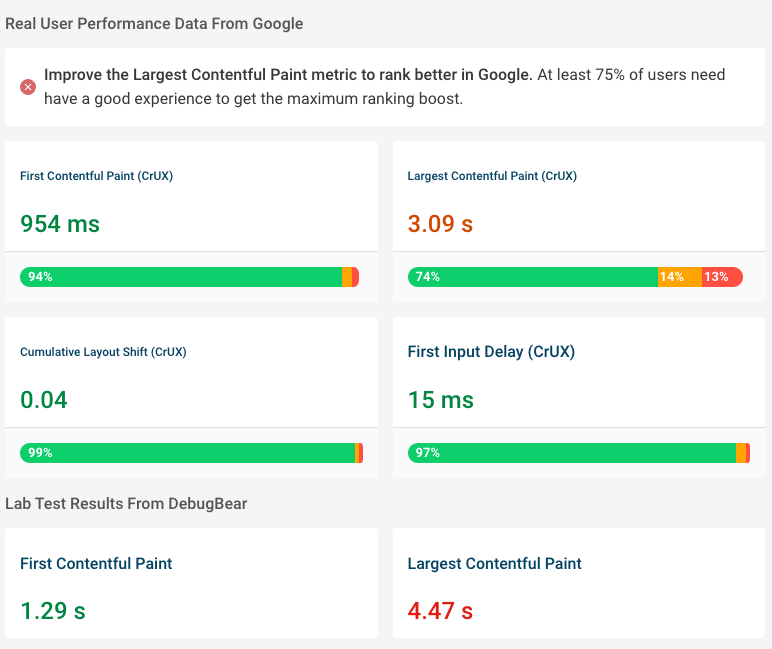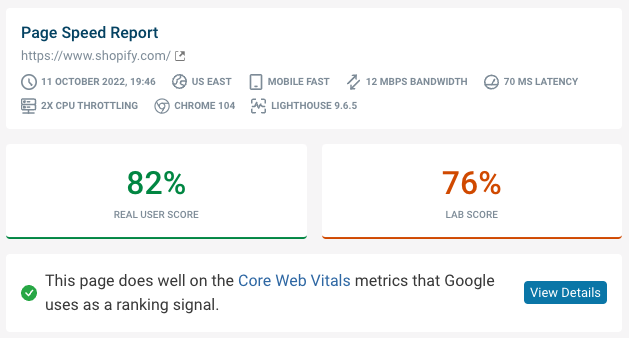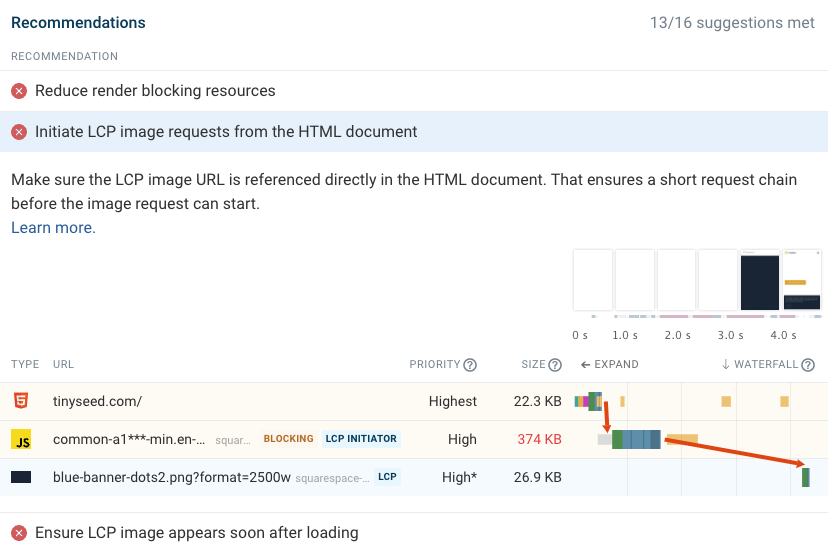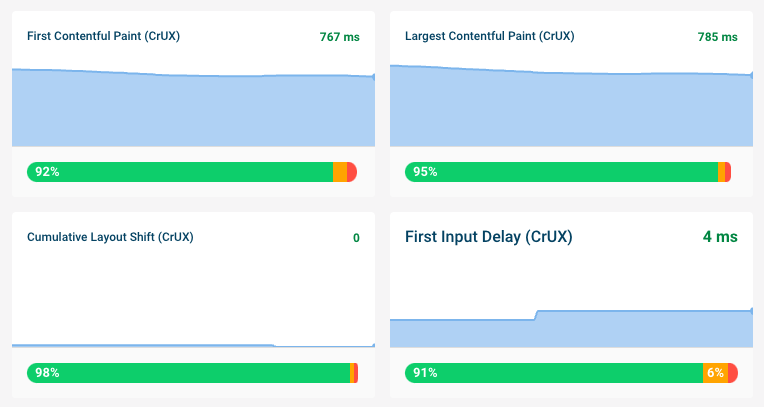Test Core Web Vitals
Enter a URL to check Google Core Web Vitals and identify optimizations.
Get a Core Web Vitals report for your website
Page experience is a ranking factor
Check Core Web Vitals for free
Our free Core Web Vitals checker lets you find out how Google is rating your website and what you can do to optimize it.
Lab and field data
Google collects field data from real Chrome users and uses that information for rankings. But numbers aren't enough to speed up your website, so we also run a detailed performance test in a controlled lab environment.

Understand Google CrUX data
What is the Chrome User Experience Report (CrUX)
Google collects performance metrics from some Chrome users and publishes those statistics in the Chrome User Experience Report.
Data aggregation
CrUX data for aggregated across the past 28 days. So if you make a change to your website it will take a few weeks to see the full impact in the Google metrics.
Interaction to Next Paint
See whether your website responds quickly to user input or whether visitors face rendering delays.

Core Web Vitals assessment and optimization
Testing Core Web Vitals
Our web vitals testing tool reports both real user data collected by Google as well as in-depth custom lab test results.
Web vitals recommendations
Want to improve Core Web Vitals? We provide a detailed analysis of each metrics and a list of opportunities to make your website faster.

LCP subparts in CrUX data
What are Largest Contentful Paint subparts?
To display the main page content the page goes through different loading phases. Subparts data shows you how long each phase takes, letting you know where to optimize.
View Core Web Vitals subparts data from Google
Google has started to publish subparts data as part of the Chrome User Experience Report. You can find these metrics in the Web Vitals tab of your test result.

Monitor Core Web Vitals
Continuously track Core Web Vitals
Stay on top of your site speed and optimize over time.
Get alerted to regressions
Find out about issues before they impact rankings. DebugBear can send notifications in Slack, Microsoft Teams or by email.

You are using an old browser that is not supported anymore. You can continue using the site, but some things might not work as expected.

